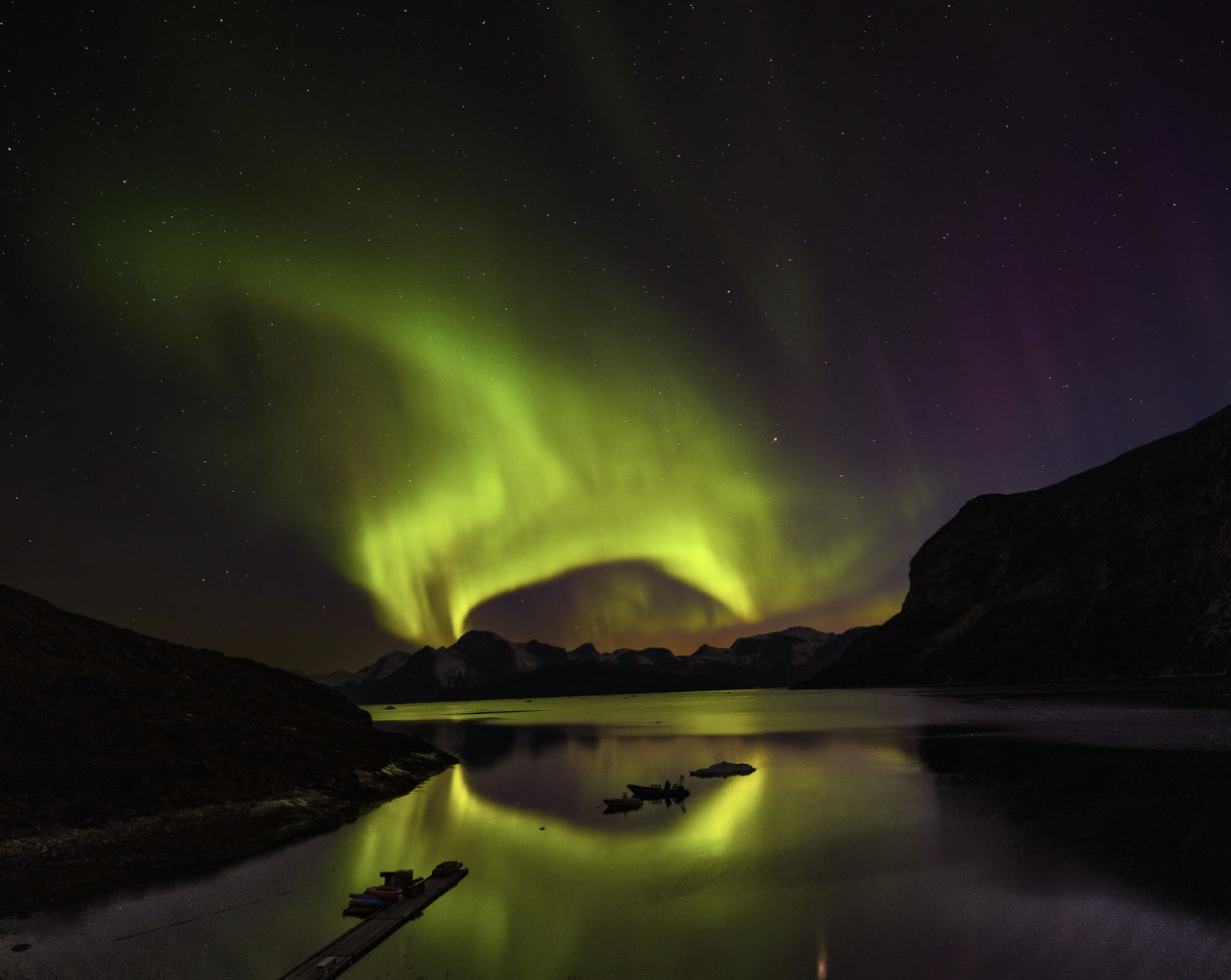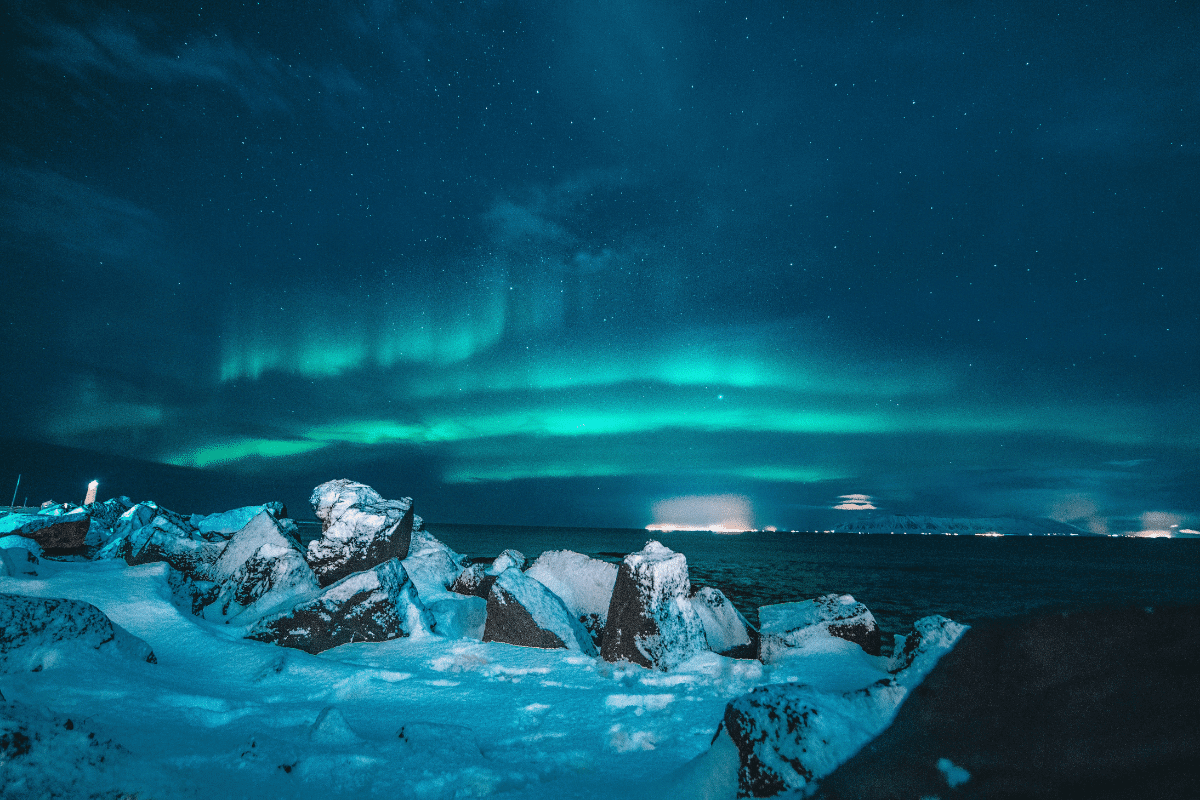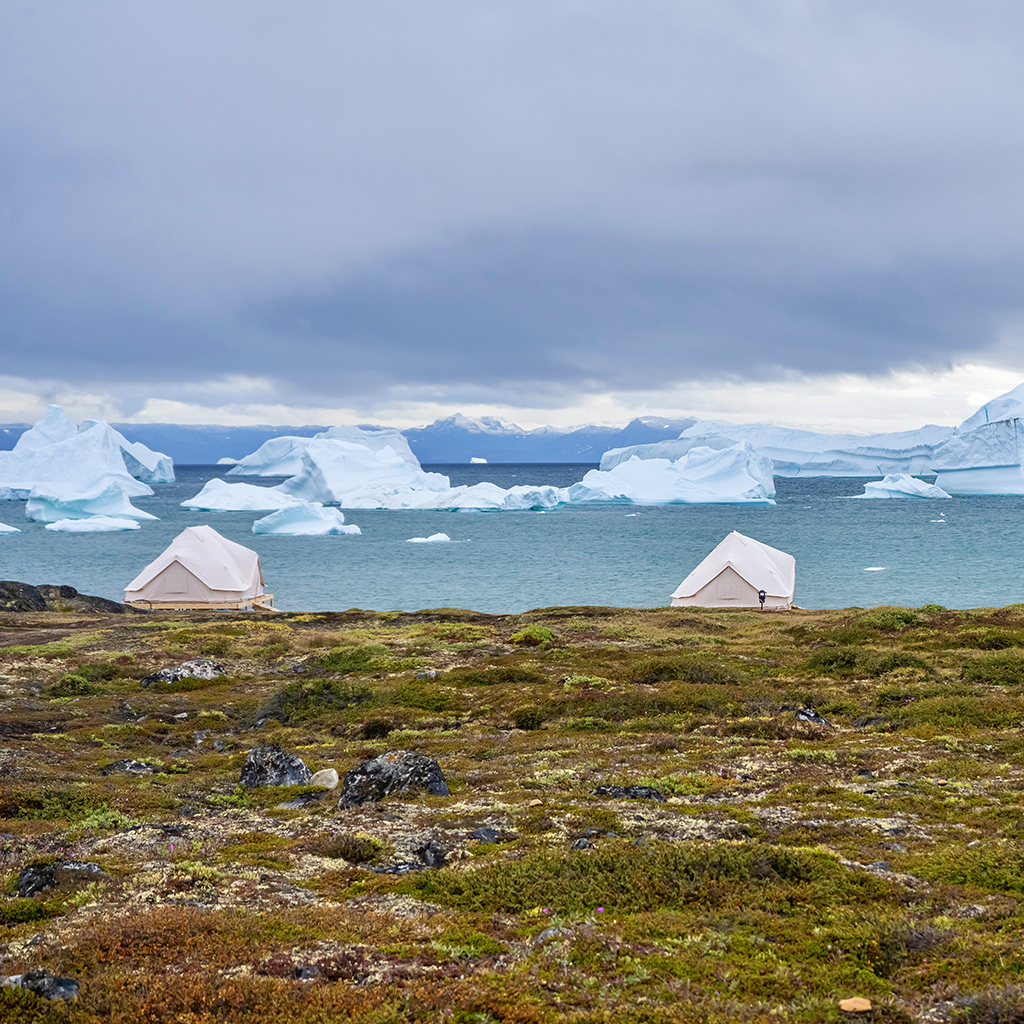
The Northern Lights are one of those things you have to see to believe. No matter how many photos you’ve scrolled through, nothing compares to standing under a sky that’s suddenly alive — waves of green, purple, and pink rippling overhead, shifting and shimmering like something out of a dream.
It’s more than just a light show; it’s an experience that stays with you, a reminder of just how wild and wondrous our world can be.
But what exactly causes this magical display? And how do you give yourself the best chance of seeing it — preferably after an epic day of yoga and adventure in Iceland? Let’s break it down.
What Are the Northern Lights, and Why Do They Happen?
It all starts with the sun. Every so often, the sun sends out a burst of charged particles — think of it as solar glitter — hurtling through space. When these particles collide with Earth’s magnetic field, they get pulled toward the poles, where they interact with gases in our atmosphere.
The result? A glowing, dancing display of color, officially known as the Aurora Borealis in the north (and the Aurora Australis in the south).
The different colors come from different gases: oxygen creates green and red hues, while nitrogen produces shades of blue and purple. The best part? No two light shows are ever the same.
Sometimes, they appear as soft, floating waves, and other times as pulsing streaks that flash across the sky. It’s pure, unpredictable magic.

Why Iceland is One of the Best Places to See the Northern Lights
To see the Northern Lights in all their glory, you need three key things:
- Dark skies — Light pollution from cities can dull the view, so the more remote, the better.
- Clear weather — Clouds can block the show, so clear nights are ideal.
- Solar activity — The sun has to be sending out enough of those charged particles.
Iceland checks all these boxes, sitting right under the “auroral oval,” a ring around the poles where the lights are most active.
From September to March, when nights are long and dark, your chances of seeing the auroras are at their peak. And while there’s never a guarantee, Iceland offers plenty of natural wonders to explore while you wait — think black-sand beaches, steaming hot springs, and waterfalls that look straight out of a fantasy novel.
Chasing the Lights: Yoga, Adventure, and the Icelandic Night Sky
Now, imagine this:
You’ve spent the day hiking across volcanic landscapes, soaking in geothermal pools, and flowing through yoga sessions that leave you both grounded and energized. After dinner, bundled up in your coziest layers, you step outside into the crisp Icelandic air.
And then — there they are. The sky flickers to life, waves of color swirling above you in complete, mesmerizing silence.
On our Iceland Yoga Adventure (the next one is in October!), we set up camp in the perfect remote locations, away from city lights, so if the auroras decide to appear, you’ll have front-row seats.
Even if they don’t make an appearance one night, there’s always another evening to try again (and, let’s be real, worse ways to pass the time than unwinding in a hot spring or exploring Iceland’s untamed beauty).
A Once-in-a-Lifetime Experience
Seeing the Northern Lights is unforgettable — not just because they’re beautiful, but because they remind you to pause, look up, and take in the moment. It’s the kind of experience that makes you feel small in the best possible way, connected to something far bigger than yourself.
So, if chasing the auroras, practicing yoga, and exploring Iceland’s wild landscapes sounds like your kind of adventure, you know where to find us. The lights are waiting — are you ready?

